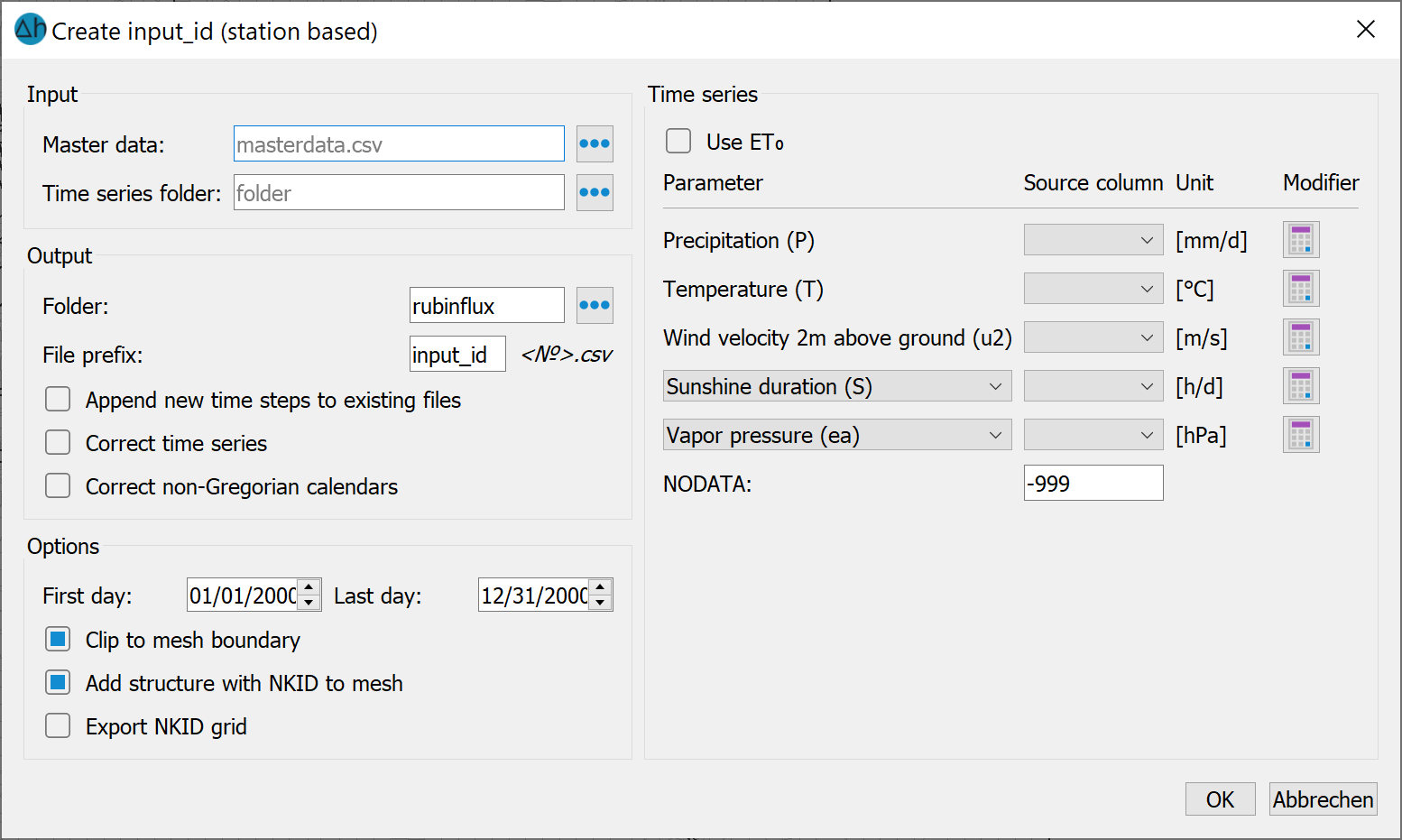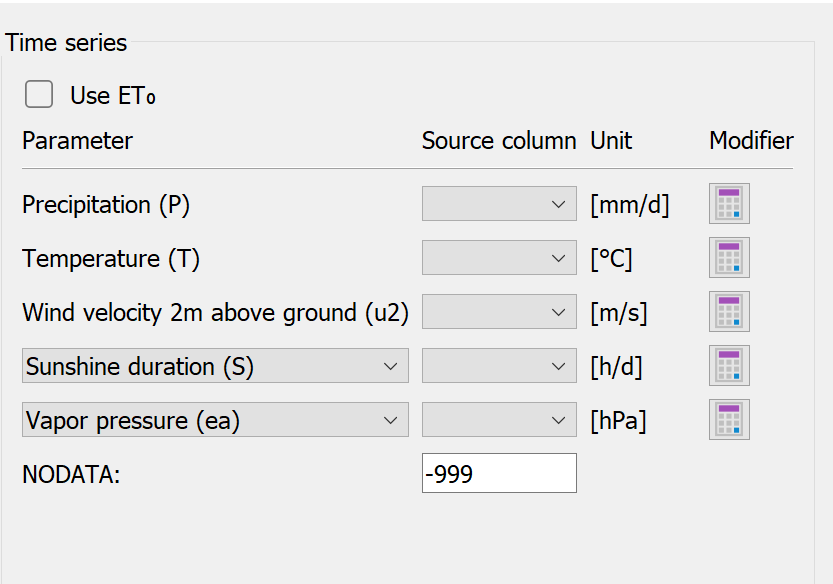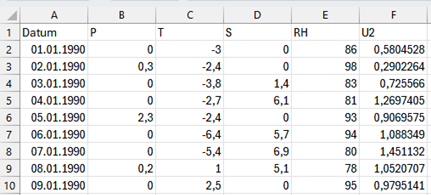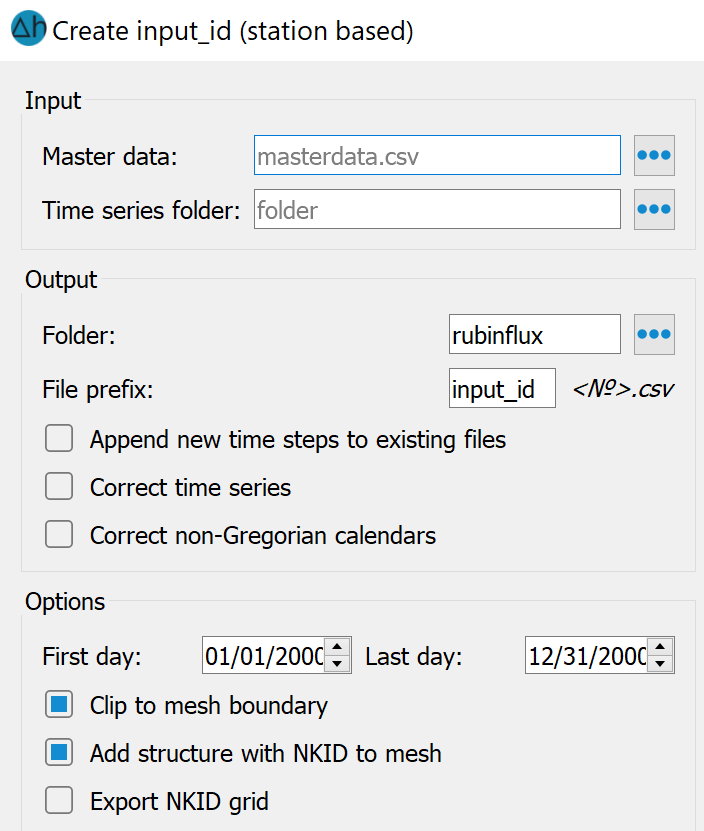Call by Attributes Compute
Compute groundwater recharge…
groundwater recharge… RUBINFLUX
RUBINFLUX Generate input_id (station-based)...
Generate input_id (station-based)...
The following input window appears:

Remark:
The right-hand side of the dialogue window is used to import and define the input data (climate time series from station data, e.g. from the Climate Data Center (CDC) of the DWD).
The left-hand side of the dialogue describes the output mechanisms for the input_idName.csv files required in SPRING.
Input data (right-hand side)

Time series
If the station data contains values for ET0 (evapotranspiration) instead of temperature, sunshine duration, etc., the corresponding checkbox should be activated. In this case, only the appropriate column name for the"Precipitation" parameter must be assigned from input file.
Parameters
At this stage, the parameters required for RUBINFLUX are assigned their corresponding column names in the input file
For the RUBINFLUX method, a physically valid set of the five parameters must be available for each calendar day:

The modifier can be used to assign a factor to each individual parameter, e.g. to increase the precipitation for a specific period. Factorisation is particularly necessary for the "Wind speed" parameter, as the the input files values typically represent the wind speed at a height of 10 m which must be corrected to correspond to the value at a height of 2 m.
The NODATA value is automatically extracted from the input data.
Output data (left-hand side)

Input
The file containing the station master data (x, y, ID name) is initially importedhere and the path to the corresponding climate time series is defined.
Output options
The file path for the output files is specified, along with the prefix for the file names. The ID numbers are automatically appended to the prefix.
The generated data can be appended to existing time series data; however, no check is performed to verify whether the end and start dates match.
When the "Correct time series" checkbox is activated, parameters with missing datacan be replaced by the parameter from the nearest, fully available measuring point.
NODATA values are replaced by interploation using the nearest neighbour method.
The "Correct non-Gregorean calendar" checkbox can be used if time series, e.g. from climate models, are available with 365 days per year or 30 days per month. Activating this checkbox either inserts the missing days (by averaging of the data) or remove any specific day (e.g. February, 30th).
Options
The period for the data to be exported is defined here.
The data to be exported can be limited to the inner model area. This allows for focusing on a specific region of interest within the model boundary.
The NKID data created can be saved directly as a structure in the opened model and/or additionally exported as a separate file (format: x, y, NKID number). This provides flexibility in how the NKID data is stored and utilized for further analysis.
 Generate interpolation weights for the input_ids
Generate interpolation weights for the input_ids
